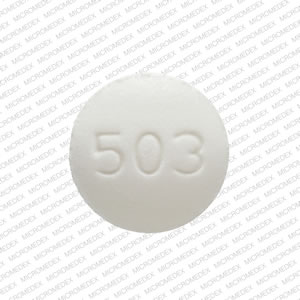Intuniv Dosage
Generic name: GUANFACINE HYDROCHLORIDE 1mg
Dosage form: tablet, extended release
Drug class: Antiadrenergic agents, centrally acting
Medically reviewed by Drugs.com. Last updated on Dec 23, 2022.
General Instruction for Use
Swallow tablets whole. Do not crush, chew, or break tablets because this will increase the rate of guanfacine release. Do not administer with high fat meals, due to increased exposure.
Dose Selection
Take INTUNIV orally once daily, either in the morning or evening, at approximately the same time each day. Begin at a dose of 1 mg/day, and adjust in increments of no more than 1 mg/week.
In monotherapy clinical trials, there was dose- and exposure-related clinical improvement as well as risks for several clinically significant adverse reactions (hypotension, bradycardia, sedative events). To balance the exposure-related potential benefits and risks, the recommended target dose range depending on clinical response and tolerability for INTUNIV® is 0.05-0.12 mg/kg/day (total daily dose between 1-7 mg) (See Table 1).
| Weight | Target dose range (0.05 - 0.12 mg/kg/day) |
|---|---|
| Doses above 4 mg/day have not been evaluated in children (ages 6-12 years) and doses above 7 mg/day have not been evaluated in adolescents (ages 13-17 years) | |
| 25-33.9 kg | 2-3 mg/day |
| 34-41.4 kg | 2-4 mg/day |
| 41.5-49.4 kg | 3-5 mg/day |
| 49.5-58.4 kg | 3-6 mg/day |
| 58.5-91 kg | 4-7 mg/day |
| >91 kg | 5-7 mg/day |
In the adjunctive trial which evaluated INTUNIV® treatment with psychostimulants, the majority of patients reached optimal doses in the 0.05-0.12 mg/kg/day range. Doses above 4 mg/day have not been studied in adjunctive trials.
Switching from Immediate-Release Guanfacine to INTUNIV®
If switching from immediate-release guanfacine, discontinue that treatment, and titrate with INTUNIV® following above recommended schedule.
Do not substitute for immediate-release guanfacine tablets on a milligram-per-milligram basis, because of differing pharmacokinetic profiles. INTUNIV® has significantly reduced Cmax (60% lower), bioavailability (43% lower), and a delayed Tmax (3 hours later) compared to those of the same dose of immediate-release guanfacine [see Clinical Pharmacology (12.3)].
Maintenance Treatment
Pharmacological treatment of ADHD may be needed for extended periods. Healthcare providers should periodically re-evaluate the long-term use of INTUNIV®, and adjust weight-based dosage as needed. The majority of children and adolescents reach optimal doses in the 0.05-0.12 mg/kg/day range. Doses above 4 mg/day have not been evaluated in children (ages 6-12 years) and above 7 mg/day have not been evaluated in adolescents (ages 13-17 years) [see Clinical Studies (14)].
Discontinuation of Treatment
Following discontinuation of INTUNIV®, patients may experience increases in blood pressure and heart rate [see Warnings and Precautions (5.4) and Adverse Reactions (6)]. Patients/caregivers should be instructed not to discontinue INTUNIV® without consulting their health care provider. Monitor blood pressure and pulse when reducing the dose or discontinuing the drug. Taper the daily dose in decrements of no more than 1 mg every 3 to 7 days to minimize the risk of rebound hypertension.
2.6 Missed Doses
When reinitiating patients to the previous maintenance dose after two or more missed consecutive doses, consider titration based on patient tolerability.
Dosage Adjustment with Concomitant Use of Strong and Moderate CYP3A4 Inhibitors or Inducers
Dosage adjustments for INTUNIV® are recommended with concomitant use of strong and moderate CYP3A4 inhibitors (e.g., ketoconazole) or CYP3A4 inducers (e.g., carbamazepine) (Table 2) [see Drug Interactions (7)].
| Clinical Scenarios | |||
|---|---|---|---|
| Starting INTUNIV® while currently on a CYP3A4 modulator | Continuing INTUNIV® while adding a CYP3A4 modulator | Continuing INTUNIV® while stopping a CYP3A4 modulator | |
| CYP3A4 Strong and moderate Inhibitors |
Decrease INTUNIV® dosage to half the recommended level. (see Table 1) |
Decrease INTUNIV® dosage to half the recommended level. (see Table 1) |
Increase INTUNIV® dosage to recommended level. (see Table 1) |
| CYP3A4 Strong and moderate Inducers |
Consider increasing INTUNIV® dosage up to double the recommended level. (see Table 1) |
Consider increasing INTUNIV® dosage up to double the recommended level over 1 to 2 weeks. (see Table 1) |
Decrease INTUNIV® dosage to recommended level over 1 to 2 weeks. (see Table 1) |
More about Intuniv (guanfacine)
- Check interactions
- Compare alternatives
- Pricing & coupons
- Reviews (164)
- Drug images
- Latest FDA alerts (1)
- Side effects
- During pregnancy
- Generic availability
- FDA approval history
- Drug class: antiadrenergic agents, centrally acting
- Breastfeeding
- En español
Patient resources
Other brands
Professional resources
Other brands
Related treatment guides
Further information
Always consult your healthcare provider to ensure the information displayed on this page applies to your personal circumstances.


